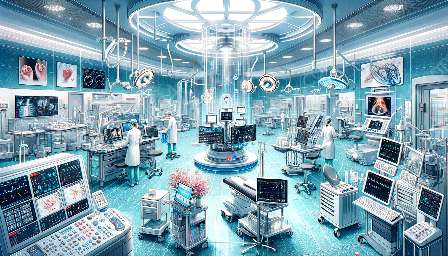Physiological data collection and analysis are critical components of healthcare and biomedical research, enabling the monitoring and understanding of human physiological processes. This topic cluster explores the technologies, methods, and applications involved in gathering and interpreting physiological data within the context of biomedical instrumentation and medical devices.
Introduction to Physiological Data Collection
Physiological data collection involves the measurement and recording of various physiological parameters, such as heart rate, blood pressure, temperature, and electrical signals from the body. These parameters provide valuable insights into the functioning of the human body and are essential for diagnosing and monitoring health conditions.
Biomedical Instrumentation and Medical Devices
Biomedical instrumentation refers to the design and development of devices and technologies used to acquire physiological data. These instruments are designed to be accurate, reliable, and non-invasive, making them essential tools for healthcare professionals and researchers. Medical devices, on the other hand, encompass a wide range of equipment used for the diagnosis, treatment, and monitoring of medical conditions.
Technologies for Physiological Data Collection
A variety of technologies are employed for physiological data collection, including:
- Sensors and Transducers: These devices convert physiological signals, such as electrical, mechanical, or chemical signals, into measurable electrical outputs.
- Biopotential Amplifiers: These amplifiers are used to capture and process bioelectrical signals, including electrocardiogram (ECG) and electromyogram (EMG) signals.
- Signal Processing Systems: These systems analyze and interpret physiological signals to extract valuable information for diagnosis and research.
- Wireless Communication: Wireless technologies enable the seamless transmission of physiological data from wearable sensors to monitoring systems, enhancing patient mobility and comfort.
Methods of Physiological Data Analysis
Once physiological data is collected, it undergoes various forms of analysis to extract meaningful information:
- Statistical Analysis: This method involves the application of statistical techniques to characterize and interpret physiological data, enabling the identification of patterns and trends.
- Time-Series Analysis: This approach focuses on analyzing physiological data over time to study dynamic changes and predict future trends.
- Machine Learning Algorithms: These algorithms are used to build predictive models and classify physiological data, facilitating disease diagnosis and personalized healthcare.
- Biomechanical Modeling: By applying principles of mechanics and engineering, biomechanical models are used to simulate and analyze physiological processes, such as muscle movement and joint mechanics.
Applications of Physiological Data Collection and Analysis
The combination of physiological data collection and analysis has numerous applications in healthcare and biomedical research:
- Clinical Monitoring: Physiological data is used for real-time monitoring of patients in healthcare settings, allowing healthcare professionals to assess vital signs and trends for timely intervention.
- Diagnostic Tools: Physiological data analysis aids in diagnosing various health conditions, such as cardiovascular diseases, respiratory disorders, and neurological disorders.
- Wearable Health Devices: The integration of physiological data collection into wearable devices enables continuous health monitoring and self-management for individuals with chronic conditions.
- Research and Development: Biomedical researchers utilize physiological data to investigate the mechanisms of diseases, evaluate the efficacy of treatments, and develop new healthcare technologies.
Conclusion
Physiological data collection and analysis play a fundamental role in advancing healthcare and biomedical research. The integration of these processes with biomedical instrumentation and medical devices has led to significant advancements in disease diagnosis, patient monitoring, and personalized healthcare. By understanding the technologies, methods, and applications associated with physiological data, healthcare professionals and researchers can continue to improve the quality of care and enhance our understanding of human physiology.


